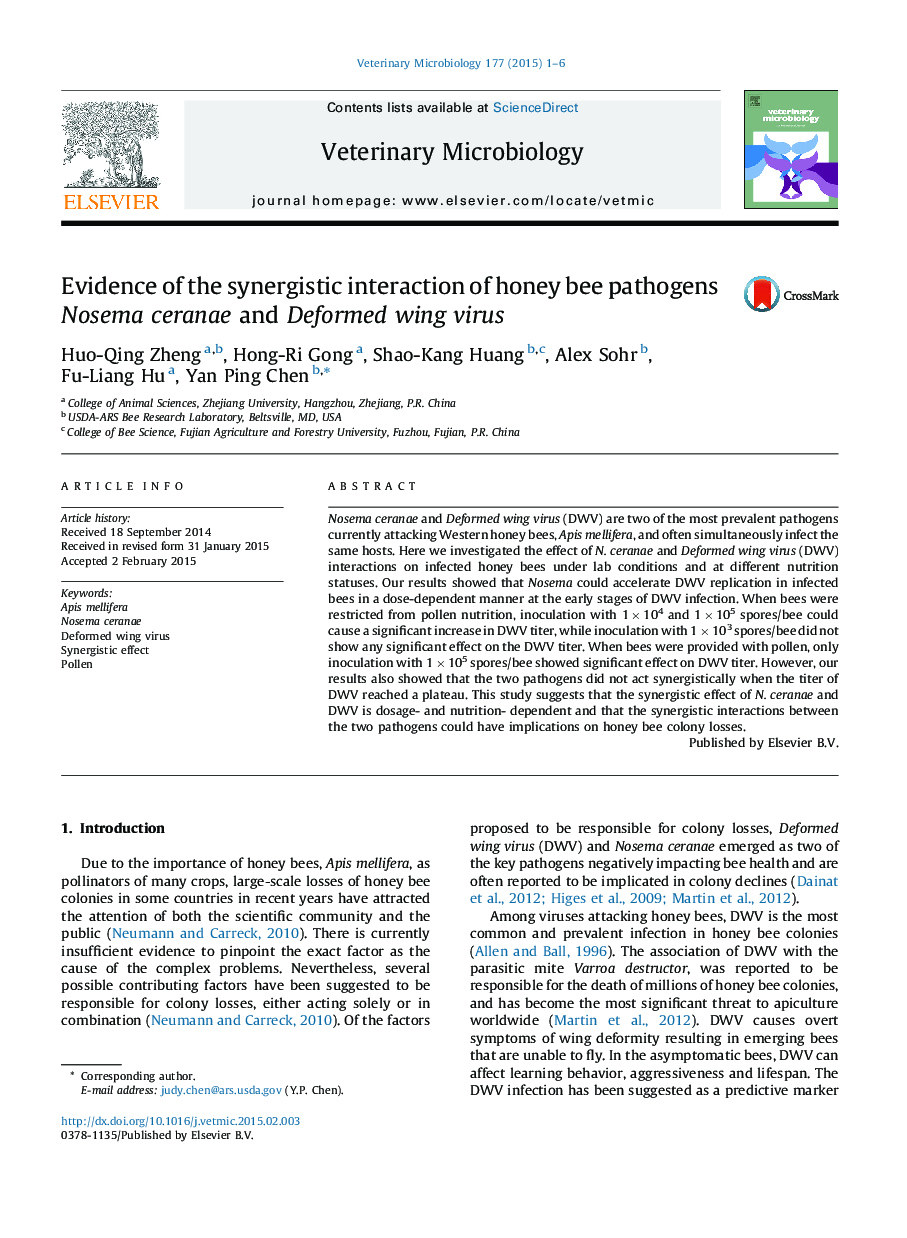| Article ID | Journal | Published Year | Pages | File Type |
|---|---|---|---|---|
| 5799920 | Veterinary Microbiology | 2015 | 6 Pages |
â¢DWV titer increased with millions fold change and reached a plateau in only a few days in cage bees.â¢Nosema could induce DWV replication in infected bees in a dose-dependent manner.â¢The synergistic effect of N. ceranae and DWV may have implication on honey bee colony losses.
Nosema ceranae and Deformed wing virus (DWV) are two of the most prevalent pathogens currently attacking Western honey bees, Apis mellifera, and often simultaneously infect the same hosts. Here we investigated the effect of N. ceranae and Deformed wing virus (DWV) interactions on infected honey bees under lab conditions and at different nutrition statuses. Our results showed that Nosema could accelerate DWV replication in infected bees in a dose-dependent manner at the early stages of DWV infection. When bees were restricted from pollen nutrition, inoculation with 1Â ÃÂ 104 and 1Â ÃÂ 105 spores/bee could cause a significant increase in DWV titer, while inoculation with 1Â ÃÂ 103 spores/bee did not show any significant effect on the DWV titer. When bees were provided with pollen, only inoculation with 1Â ÃÂ 105 spores/bee showed significant effect on DWV titer. However, our results also showed that the two pathogens did not act synergistically when the titer of DWV reached a plateau. This study suggests that the synergistic effect of N. ceranae and DWV is dosage- and nutrition- dependent and that the synergistic interactions between the two pathogens could have implications on honey bee colony losses.
